Celebrating Young Investigators: 2019 Award Winners
Leire Abalde-Atristain
Martin and Carol Macht Award
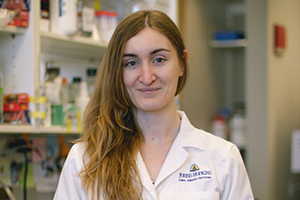
Please describe your research discovery.
Cells need to be in tune with their surroundings to decide when it is most favorable for them to grow. A protein called mTOR is key for sensing the availability of nutrients and serves as a switch between energy-producing and energy-consuming cellular processes. mTOR activity is enabled by its association with several proteins into the mTOR complex 1, and tight regulation of this activity is fundamental for the health of cells.
Our research, conducted in the laboratory of Ted and Valina Dawson, has shown that another protein, called Thorase, can dismantle this mTOR complex 1. Mice that lack Thorase have an excess of mTOR activity, which leads to sudden death through a severe neurological condition reminiscent of what we observe in children harboring Thorase mutations. We have found that treating these mice with the mTOR inhibitor rapamycin greatly alleviates their disease. Since this drug and its derivatives are already used in the clinic, we hope that our findings will be readily translatable. Given that our lab has uncovered a broader role for Thorase in the protection of neurons, we believe our discovery will also have implications for other maladies, such as stroke.
Why did you choose Johns Hopkins for your work?
When applying to graduate schools, I believed that scientific breakthroughs could hardly be made single-handedly, so I was captivated by the sense of community and emphasis on collaboration emanating from Hopkins when I interviewed for the cellular and molecular medicine graduate program.
What does receiving this award mean to you personally and professionally? Do you have any connection with the particular award you received?
I feel honored and humbled to be chosen for the Martin and Carol Macht award. When I was a first-year student, my rotation mentor in the Dawson lab — Ian Martin — received one of these awards, a career goal I have aspired to ever since.
What contributed to your project’s success?
I am incredibly grateful to Ted and Valina Dawson for nurturing my independence and for their unconditional trust in my ability to drive this project forward. I have also had the fortune to tandem with George Umanah for this work; he is an excellent biochemist and a delight to work with. Likewise, this project has benefited from key contributions from the laboratories of Taekjip Ha and Paul Worley. On a more personal side, I have to thank my family and friends for always believing in me, especially in times of hardship.
What thoughts do you have about Young Investigators’ Day itself, as a celebration of the roles students and fellows play in research at Johns Hopkins?
I think it speaks to the greatness of Johns Hopkins that it recognizes young trainees for their research contributions to science and medicine. As an early career scientist, you can feel very vulnerable, face self-doubt and struggle to find your place in a given field. Therefore, being recognized by your peers provides great momentum to move forward.
Tell us something interesting about yourself.
I was born in San Sebastian, in the Basque Country, a region in northern Spain where we speak Euskera — the oldest living language in Europe. I was raised bilingually and have always enjoyed learning new languages. Had I not chosen to pursue a career in science, I would have trained as a translator and interpreter. Inadvertently, I have ended up investigating another kind of translation — the molecular one — and its role in neurodevelopment and neurodegeneration.
Travis Austin Babola
Alicia Showalter Reynolds Award
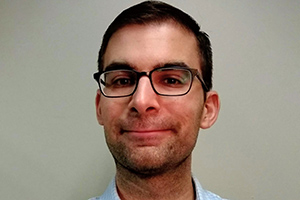
Please describe your research discovery.
I’ve always been told that practice makes perfect. In the developing auditory system, this also seems the case. Even before hearing begins, cells in the inner ear rehearse for hearing — sending electrical signals to the brain that are indistinguishable from pure tones. During my Ph.D. studies, I was able to visualize these signals in awake animals using fluorescent brain activity sensors. We found that brain activity in developing auditory centers is highly organized and propagates from the periphery all the way to the auditory cortex. This activity was not driven by sounds (the auditory canal is not open), but originated in the inner ear itself, as removal of the ears abolished this activity. While we don’t know the exact role this activity plays during development, we suspect that coordinated activation of brain cells across multiple brain areas helps refine and strengthen newly formed brain connections. Understanding how this activity influences development may help us gain new insights into auditory processing disorders in young children, the causes of which remain unknown and underexplored.
Why did you choose Johns Hopkins for your work?
I had my sights set on Hopkins after working for two years as a research technician at the University of Texas at Austin. With acceptance of my application and my (now) wife already living outside D.C., it was a no-brainer.
What does receiving this award mean to you personally and professionally? Do you have any connection with the particular award you received?
Upon receiving the email for this award, I immediately delved into figuring out who the namesake was. I was saddened to see that Alicia Showalter was a young Ph.D. student whose life was taken too early on a trip to Virginia to visit her mother. I hope to honor Alicia by committing to continue my research and studies. I am lucky to have been chosen for this award and appreciate those around me who have made my success probable.
What contributed to your project’s success?
The many personalities of the Bergles lab, Crair lab and Muller lab contributed immensely to my success. I’ve worked with so many great people who shared key insights and advice, many of whom I could not give enough thanks. In particular, Amit Agarwal and Dongeun Heo slogged me through the basics of molecular biology, Alexandra Gribizis and Michael Crair provided key technical assistance in live calcium imaging, and Dwight Bergles sparked more ideas than I could ever attempt to explore.
What thoughts do you have about Young Investigators’ Day itself, as a celebration of the roles students and fellows play in research at Johns Hopkins?
Science is hard and life is short. Young Investigators’ Day serves to recognize the accomplishments of young scientists in a time when careers and futures are uncertain. I am lucky to have been selected and will keep working tirelessly toward being the best scientist I can be.
What has been your best/most memorable experience while at Johns Hopkins?
Hopkins hosts scientists from all around the world and sends its scientists to conferences all over the world. I’ve had conversations with people from China, Taiwan, Russia, Germany and South Korea — and that’s just people in my lab!
Tell us something interesting about yourself.
As all of my colleagues will tell you, I won’t shut up about marching band. I was in the University of Texas Longhorn Band and the Cavaliers Drum and Bugle Corps during college, and have performed all across the United States.
Bilal Bari
David I. Macht Award
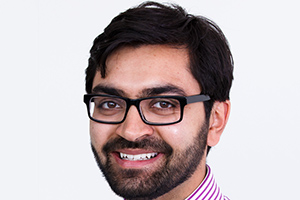
Please describe briefly and in simple terms your research discovery.
Our brains have evolved to make decisions in changing environments, which means we have to continually learn in order to make adaptive choices. This type of learning requires two components: 1) maintaining a memory of how rewarding recent choices have been and 2) updating this memory following interactions with the environment (e.g., if a choice was better or worse than expected). While we know quite a bit about how we update our expectations, we know far less about where or how these memories are stored in the brain.
As an M.D./Ph.D. student in Jeremiah Cohen’s lab, I have had the opportunity to study this problem and make inroads in understanding the neurobiology of decision-making. We took advantage of the mouse, a model organism increasingly used to study cognition. Using a combination of sophisticated behavioral paradigms, mathematical modeling, electrophysiology, pharmacology and optogenetics, we discovered that neurons in the mouse medial prefrontal cortex specifically maintained a memory of recent interactions with the environment. In particular, we found that individual neurons maintained this memory over long timescales. We also discovered a neural pathway that we believe provides a circuit mechanism for how these memories inform future choices.
We believe this work answers a long-standing question of how the nervous system remembers interactions with the environment and allows for flexible decision-making. Given my long-term interests in understanding psychiatric disease, I think this work provides a rich substrate to explore disease and gain insight into how disorders of decision-making can be corrected.
Why did you choose Johns Hopkins for your work?
I primarily chose Johns Hopkins for the collegial and collaborative spirit of the institute. As an incoming M.D./Ph.D. student, I was interested in training at a program with clinical expertise and top-tier research faculty in a wide array of fields. Now in my seventh year, I can say that Hopkins is as excellent as I thought it would be. The people here are as kind as they are amazing and have pushed me to grow both personally and intellectually.
What contributed to your project’s success?
It has been a tremendous privilege to work in Jeremiah Cohen’s lab. Dr. Cohen has given me intellectual freedom that has allowed me to pursue my thesis with creative control. The project has grown organically as a result. I am also fortunate to have an excellent and passionate thesis committee composed of Daniel O’Connor, Dwight Bergles, who was pivotal in helping me start my Ph.D. on solid ground, Reza Shadmehr and Alfredo Kirkwood. Dr. Shadmehr, in particular, has been hugely influential. I have long been enamored with the mathematically rigorous approach he is known for, and I have attended his lab meetings for a few years to learn as much as I can.
What has been your best/most memorable experience while at Johns Hopkins?
I find the annual M.D./Ph.D. program retreats to consistently be my favorite experiences at Hopkins. M.D./Ph.D. programs are long and everyone grows tremendously during this time. It’s been amazing to have the opportunity to grow personally and professionally with lifelong friends. I have to thank Robert Siliciano and Andrea Cox for making the program such a welcoming environment.
What are your plans over the next year or so? Graduating, looking for faculty positions, etc.?
Research is my primary passion, and my long-term interest is to study the neural basis of psychiatric disease. I am planning to return to medical school in August to finish years 3 and 4. Following medical school, I may pursue a psychiatry residency or opt for a postdoctoral fellowship instead.
Tell us something interesting about yourself that makes you unique.
As a first-generation immigrant, I spent my early childhood moving around quite often, living in Pakistan, London and New York. My family ultimately settled when I was 9 in Cairo, Georgia, a rural town of less than 10,000. Growing up in a rural town was a special experience and one I’ve grown to cherish the older I’ve gotten.
Michael R. Blatchley
Paul Talalay Award
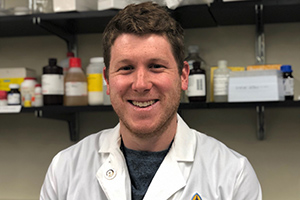
Please describe briefly and in simple terms your research discovery.
Deepening our collective understanding of how blood vessels form has the potential to benefit the development of new therapies for two of the leading causes of death worldwide, cardiovascular disease and cancer. Interestingly, cardiovascular disease treatment aims to promote blood vessel formation, while cancer therapies aim to inhibit the formation of tumor vasculature, further highlighting the need to understand the details of this process in order to successfully control it in both contexts. Studying how human blood vessels form in the lab requires a highly biomimetic platform that can mimic aspects of the regenerative/pathological environment in which blood vessels form in vivo. To achieve this, I used oxygen-controllable hydrogels to study the impact of 3D hypoxic gradients on endothelial cell behavior. Hypoxia is a hallmark of pro-angiogenic environments and is known to regulate many vital biological processes. Using this system, I was able to recapitulate the key morphogenetic events of an understudied mechanism for blood vessel formation, identify regulators of the process, and control vascular networks by manipulating the environment in which the endothelial cells reside. I have done my research in the lab of Sharon Gerecht.
Why did you choose Johns Hopkins for your work?
The track record for groundbreaking research is among the best of any university in the world. The opportunity to be a part of the research community at Hopkins was an opportunity I couldn’t pass up
What contributed to your project’s success?
I have been guided by exemplary mentorship and have been incredibly fortunate to have so many great labmates to discuss hypotheses, refine my experimental techniques and learn new protocols. I certainly would not have been able to do this alone and am grateful for everyone who contributed to the success of this project.
What thoughts do you have about Young Investigators’ Day itself, as a celebration of the roles students and fellows play in research at Johns Hopkins?
I really look forward to hearing about the work of the other awardees, and think it is great to have a research day designed to bring together those in many unique fields to get a sense of a lot of the fascinating work going on at Hopkins from the perspective of young scientists.
Tell us something interesting about yourself.
Away from the lab, I like to spend as much time as I can outdoors. I have really enjoyed the mountain biking and hiking around Baltimore, and have had a blast playing on intramural and city league soccer, basketball and softball teams. Running, cycling and walking my dog are the best times for me to organize figures in a paper, think about new ideas and clear my head.
Zoila Areli Lopez Bujanda
Mette Strand Award
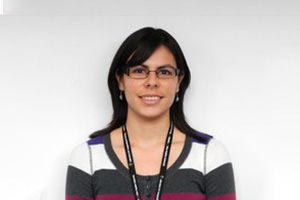
Please describe briefly and in simple terms your research discovery.
Despite the profound and durable clinical responses to checkpoint therapy that have led to FDA approval for PD1 and CTLA4 blockade in several tumor types, patients with prostate cancer have yet to benefit from these therapies. Understanding the immunosuppressive pathways underpinning the lack of anti-tumor responses in prostate cancer, as well as the mechanisms that regulate these pathways, may lead to novel treatment paradigms that unleash the potential of checkpoint therapy in the treatment of prostate cancer.
As a Ph.D. student in Charles Drake’s laboratory, I found that an important immune-resistance mechanism is initiated as a byproduct of the main line of treatment for prostate cancer, androgen deprivation therapy (ADT). Androgen receptor loss of signaling following ADT induces prostate tumor cells to upregulate the expression of IL-8. IL-8 is a chemokine that recruits suppressive neutrophils in the context of cancer known as polymorphonuclear myeloid derived suppressor cells (PMN-MDSCs). Inhibiting IL-8 signaling led to a reduced recruitment of PMN-MDSCs to prostate tumors. Furthermore, hindering the recruitment of PMN-MDSCs in combination with checkpoint blockade significantly delayed tumor outgrowth. Our data provide a rationale for targeting PMN-MDSC recruitment in combination with immune checkpoint blockade for the treatment of prostate cancer before ADT is administrated, when the immune-suppressive microenvironment has not been yet established. Based on these findings, our group has launched an investigator-initiated clinical trial to evaluate targeting PMN-MDSCs in combination with checkpoint blockade before ADT in prostate cancer patients.
Why did you choose Johns Hopkins for your work?
I was fortunate to come to Johns Hopkins for a short internship while I was pursuing my master’s degree in Mexico, and I can honestly say that I fell in love with the place. I was impressed by the level of collaboration between laboratories and the commitment of its people to work together to achieve great things. My interest in translational research was the driving force that led me to choose the pathobiology program for my Ph.D. studies.
What does receiving this award mean to you personally and professionally? Do you have any connection with the particular award you received?
This award provides a validation of my scientific achievements to date. It is also a motivator for me toward continuing down the path of a career researcher.
What contributed to your project’s success?
Definitely, my Ph.D. adviser, Charles G. Drake (Chuck), has been a source of inspiration all along the way. Having a mentor who trusted me to work independently, while being approachable and critical with my research was very important to my project’s success. I would also say that working among scientists with varied expertise and a desire to collaborate has also been instrumental for the success of this project.
What thoughts do you have about Young Investigators’ Day itself, as a celebration of the roles students and fellows play in research at Johns Hopkins?
These awards highlight the importance of the contributions of scientists in training and provide a platform for them to network and build potential future collaborations.
What has been your best/most memorable experience while at Johns Hopkins?
One of my most memorable moments at Johns Hopkins happened while working on my first doctoral project. I discovered a myeloid gene signature contained in a data set that was isolated on a fluorescent tag reporter that was only expressed in prostate tumor cells. This finding was a steppingstone for the project that eventually lead me to receive The Mette Strand Research Award and initiated a new area of research in the laboratory.
Tell us something interesting about yourself.
I am a product of public investments in education. Scholarships have been a cornerstone of my education since middle school. Through public funds, I was fortunate enough to experience research internships in Spain and the U.S., and from these experiences, I was exposed to female role models in science who inspired me to be where I am today. In the future, I want to offer the same guidance I had to up-and-coming scientists who need it.
As a Ph.D. student, I have become interested in furthering opportunities for underrepresented minorities in the sciences. I served as the treasurer for a graduate student organization that is focused on fostering minority students in science. As a researcher, I am highly interested in training future scientists from underrepresented communities.
Xitiz Chamling
W. Barry Wood Jr. Award
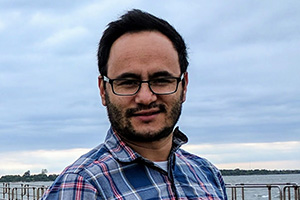
Please describe briefly and in simple terms your research discovery.
Immune mediated loss of myelin sheaths (a process called demyelination) from the neurons in the brain and/or spinal cord causes neurological diseases such as multiple sclerosis (MS). In the human brain and spinal cord, myelin acts as an insulating material that coats and protects neurons and helps conduct information between the brain and various parts of our body. In order to improve function and reduce disability in patients with MS, it is desirable to develop therapies that both: 1) inhibit the activity of disease-causing immune cells, and 2) promote remyelination of axons by oligodendrocytes, the specialized cells that produce myelin sheath. Currently, all available drugs for MS focus on controlling a patient’s immune response. No drugs are available that can directly promote remyelination. In our laboratory, we have established an efficient method to grow human oligodendrocyte cells. We are using the gene editing technique called CRISPR/Cas9 to insert fluorescent markers and reporter sequences into specific genes so that the cells that become oligodendrocytes will be molecularly labeled. The labeled cells can be easily detected, identified and purified. Using these cells, we have established an assay platform to screen for drugs that promote myelin formation. We are beginning to test libraries of drugs to identify a lead drug that can promote the remyelination capacity of the human oligodendrocyte cells and prevent them from dying under stressful conditions. This research is conducted in Donald J. Zack’s laboratory in the Department of Ophthalmology.
Why did you choose Johns Hopkins for your work?
I found that Johns Hopkins has numerous state-of-the-art resources and a very collaborative research environment. In addition, I also like the geographical location of Johns Hopkins. A lot of big research institutes such as the National Institutes of Health, the National Center for Advancing Translational Sciences (NCATS), and the Food and Drug Administration are within a short driving distance to Hopkins. In fact, proximity to NCATS has allowed our laboratory to collaborate with researchers there and even drive there to perform experiments.
What contributed to your project’s success?
Guidance, support and encouragement from my mentor, Don Zack, certainly played a huge role in the success of this project. Similar to most of the research, this project also went through a lot of failures. Therefore, I would say, perseverance and commitment from my end is another factor. In addition, discussing our research with other scientists (even the ones outside our scientific niche) and getting their feedback and suggestions was also very helpful.
What has been your best/most memorable experience while at Johns Hopkins?
Working in the collaborative setting of the Wilmer Eye Institute has been a very positive and memorable experience in general. Outside of work, I started a family during my time at Hopkins. We recently had our first baby, which is probably the most memorable experience.
Tell us something interesting about yourself.
Moving to the United States and building a life here is probably my most interesting life experience, especially because I came to the United States for college, on my own, when I was 18 years old.
Farzana A. Faisal
Physician Scientist Award
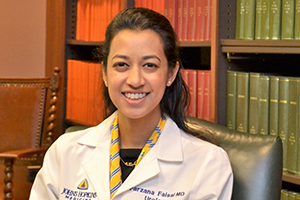
Please describe briefly and in simple terms your research discovery.
I began my work with Tamara Lotan as a medical student at Johns Hopkins, and our research has focused on the biological determinants of racial disparities in prostate cancer. African-American men have a 1.5-fold higher incidence of prostate cancer than European-American men, and are nearly 2.5 times more likely to die from their disease. The biologic and genetic causes of these disparities are unknown. My work with Dr. Lotan has identified several molecular subtypes and genomic alterations of prostate cancer that are unique to African-American men. Importantly, some of these genomic alterations are directly associated with increased risks of metastasis and poor prognosis in this population. These genetic discoveries are critical for the development of prognostic and therapeutic approaches for precision medicine in African-American men.
What does receiving this award mean to you personally and professionally? Do you have any connection with the particular award you received?
Johns Hopkins and the Brady urology department provided me with endless resources to pursue scientific research endeavors alongside my career in medicine. For this, I feel personally grateful for receiving the Physician Scientist Award. My mentors at Hopkins not only contribute to my surgical training, but also fully endorse my work in urologic research and discovery.
What contributed to your project’s success?
My work would not have been possible without the tremendous support from and guidance by Dr. Lotan.
What thoughts do you have about Young Investigators’ Day itself, as a celebration of the roles students and fellows play in research at Johns Hopkins?
It is a testament to the spirit of Hopkins Medicine that Young Investigators’ Day recognizes those physicians who are working toward both a career in medicine and science. Many of my fellow residents are engaged in high-quality scientific research while also balancing the grueling hours of residency, and I am extremely honored to be representing all of us at Young Investigators’ Day!
What are your plans over the next year or so? Graduating, looking for faculty positions, etc.?
In July 2019, I will return to my surgical training for my last two years as a urology resident.
Tell me something interesting about yourself that makes you unique. Do you have any special hobbies, interests or life experiences?
I grew up in Lake City, Florida, and attended Yale University. I enjoy cooking from celebrity cookbooks, going through several novels a month on my Kindle, and spending time with my co-residents around Baltimore.
John Hickey
Hans J. Prochaska Award
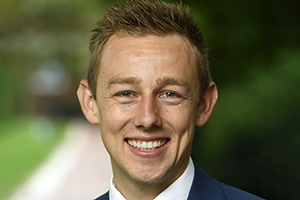
Please describe briefly and in simple terms your research discovery.
In the Schneck and Mao labs, I engineered several biomaterials, including magnetic particles and extracellular matrix hydrogels, to overcome some of the challenges facing T-cell immunotherapies. In the process, we revealed key biology of T-cells such as nanoscale receptor organization and mechanical and environmental influences of T-cell activation, while extending our capacity to use these cancer-specific T-cells as a therapy.
What contributed to your project’s success?
Many, many people and organizations contributed to the success of my project. At the forefront are my two principal investigators: Jonathan Schneck and Hai-Quan Mao. They were instrumental in their confidence in me, openness to new ideas and collaborations, guidance and training, and providing a fertile lab environment. My projects were also able to be successful because of the support from students I mentored, the biomedical engineering program, and my wife.
What thoughts do you have about Young Investigators’ Day itself, as a celebration of the roles students and fellows play in research at Johns Hopkins?
It is fantastic that Hopkins celebrates the accomplishments and contributions of its trainees. It really speaks to their commitment to training and future success of their trainees.
What has been your best/most memorable experience while at Johns Hopkins?
One of my favorite moments was my public thesis defense. It was such a happy and emotional occasion where it was a forum I could share the culmination of all my greatest experiences, learning and research with my family, friends and colleagues.
What are your plans over the next year or so? Graduating, looking for faculty positions, etc.?
I will be going to Stanford to start a postdoctoral fellowship within the lab of Garry Nolan.
Tell us something interesting about yourself.
I love spending time with my wife and two sons: going on adventures in the forest, exploring museums, playing at the playground, making up superhero animal stories, reading books and telling stories.
Sakibul Huq
Paul Ehrlich Award
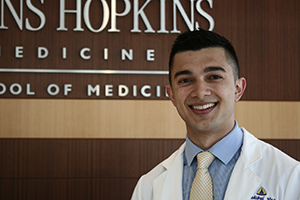
Please describe briefly and in simple terms your research discovery.
My work has been carried out in the Hunterian Neurosurgical Research Laboratory led by Henry Brem and Betty Tyler. While our laboratory is primarily focused on developing therapeutics for brain tumors, we saw an opportunity to expand our work to head and neck cancer in order to meet a significant clinical need. This project demonstrated that the FDA-approved antiviral drug ribavirin has a potent anti-tumor effect in vitro and in vivo in nasopharyngeal carcinoma (NPC), a malignancy with a propensity for metastasis and a prominent lack of available targeted therapies. We showed that ribavirin’s effects were mediated by modulating four protein targets known to play important roles in NPC cancer biology. Our work provides a foundation for clinical evaluation of ribavirin in NPC.
Why did you choose Johns Hopkins for your work?
I was initially drawn to Johns Hopkins due to its rich history of clinical and scientific excellence, particularly regarding innovation in the surgical sciences. I soon came to realize that the greatest part about Hopkins is its people. There is a contagious sense of enthusiasm and passion in every member of the Hopkins community. It is a highly collaborative atmosphere filled with fantastic mentors who are passionate about their work and shaping the careers of others.
What does receiving this award mean to you personally and professionally? Do you have any connection with the particular award you received?
I am grateful for receiving this award, and it is a great motivator for me to continue this work and eventually lead my own laboratory as a surgeon-scientist. However, I really see it as a testament to the incredible team and mentorship that we have in our laboratory. We have a phenomenal, highly collaborative group committed to making discoveries that will ultimately benefit patients. Paul Ehrlich pioneered the concepts of chemotherapy and a “magic bullet”; this award in his name feels particularly fitting, as our project’s premise involves specifically targeted therapy in a cancer with significant clinical need.
What contributed to your project’s success?
Our project’s success was due in large part to the leadership and guidance of phenomenal mentors in the Hunterian lab, including Henry Brem, Betty Tyler and Nicolas Skuli. I have also benefited greatly from peer mentorship from fellow medical students who became close friends. This project was a collaboration with the Head and Neck Cancer Research Laboratory at Johns Hopkins; their team was instrumental in its success. Finally, we’re fortunate to have a highly productive and cohesive team that is passionate about its work and invested in each other’s success. We have a lot of fun in the lab and never feel like we’re “working” at all.
What has been your best/most memorable experience while at Johns Hopkins?
It is a privilege to care for patients on the hospital wards and to search for cures for their ailments in the laboratory. Clinically, I particularly enjoyed my surgery rotation and was inspired by the profound impact that surgeons can have on patients’ lives during particularly vulnerable moments. Scientifically, this project has been especially memorable. It was rewarding to see it through from an initial hypothesis to complete fruition. During this process, I came to truly appreciate the uniquely collaborative atmosphere at Hopkins. From the day I first introduced the project idea, there were enthusiastic people ready to support it and help however possible to make it happen. I hope that this support and our work will ultimately benefit patients afflicted with this disease.
Tell us something interesting about yourself.
I’m from Pittsburgh, Pennsylvania, and went to college at the University of North Carolina-Chapel Hill, where I became an avid fan of UNC basketball. Before medical school, I spent a year working in health care consulting in Washington, D.C., followed by a year of research at the University of Pittsburgh School of Medicine. I enjoy playing soccer and basketball, practicing piano, traveling and spending time with friends and family.
Yuuta Imoto
A. McGehee Harvey Award
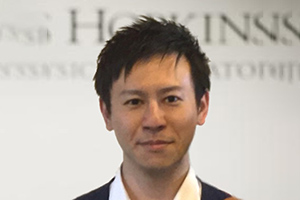
Please describe briefly and in simple terms your research discovery.
Our body is made up of about 37 trillion cells. These cells communicate with each other to regulate homeostasis and sustain our life. For example, for neuronal communication, neurotransmitters are released from pre-synaptic neurons and received by post-synaptic neurons. During wound healing, epidermal growth factors are delivered to the neighboring cells for the regeneration of the damaged tissue. When cells are invaded by pathogens, messenger protein, interleukin, is immediately sent to immune cells. Receptor proteins for these signal transmitters are sitting on the surface of the cell (plasma membrane). To control the cellular communications, cells constantly alter their shapes by adding and removing membranes with the receptors to their surface. These membrane remodeling events essentially control all cellular functions and thus are fundamental to our life. However, how these processes are fueled is not well understood, particularly during endocytosis — the process by which plasma membrane is removed from the cell surface.
During endocytosis, a piece of plasma membrane is invaginated and pinched off to generate a vesicle. The pinching-off reaction is mediated by the motor protein dynamin. Dynamin molecules form a ring-shaped structure at the base of the membrane invagination and constrict the membrane to close the gap between two opposing membranes. This mechanochemical reaction is fueled by intracellular energy currency guanosine triphosphate, GTP. Dynamin demands a large amount of GTP to generate the motive force, however the GTP concentration within cytoplasm is insufficient for the dynamin function. In contrast, the GTP concentration sufficient for dynamin function would be toxic to the cell. Then, how does the cell regulate GTP?
To address this question, I decided to measure the GTP level during endocytosis using a fluorescence-based biosensor for GTP. To our surprise, the GTP level was transiently elevated at the site of endocytosis. This temporally elevated GTP-fueled dynamin activity. Furthermore, using a genetic approach, I identified a specific protein, which is recruited to the endocytic sites to generate GTP. These results demonstrate that cells regulate the GTP level locally and transiently during endocytosis and thereby have provided a new insight into the energy regulation for membrane remodeling. These findings have further implications in the field since GTP is consumed by molecular nanomachines used in many intracellular processes, such as synaptic vesicle recycling, proliferation of the cell, organelle homeostasis and cell migration. Thus, my research opened up a new avenue in the field to investigate local energy control for cellular functions.
This research was done in the Shigeki Watanabe lab (Department of Cell Biology).
What does receiving this award mean to you personally and professionally? Do you have any connection with the particular award you received?
Personally, this award is an encouragement for my research career — it made me feel that I can continue on what I am really interested in. At the same time, it made me realize the importance of the environment and people surrounding me. It is hard to imagine doing the same experiments without the people around me, especially my family, my boss (Shigeki), all the lab members and collaborators. I’m having a great experience during my time here at Hopkins.
What contributed to your project’s success?
I am very fortunate to be working with amazing lab members and collaborators in Hopkins. Each of their important contributions made this project possible. I especially owe my thanks to my adviser Shigeki Watanabe — his advice, patience and encouragement were the driving forces behind my success. I also have my family to thank for their support, which helped me overcome every obstacle.
What has been your best/most memorable experience while at Johns Hopkins?
Since I came here from Japan two years ago, I feel everything is exciting and memorable, but particularly exposing myself to diverse culture and working with open-minded people at Hopkins have been the best experiences.
Tell us something interesting about yourself.
Originally, I was interested in astrophysics and engineering as an undergraduate student. During the transition to a graduate student, I was influenced by the fascinating work of Gottfried Schatz and Cristian de Duve, who found mitochondrial DNA and lysosome/peroxisome, respectively. Because I was surrounded by their former trainees, I became interested in cell biology. It was surprising to me, that a cell is like a galaxy. Even within a ~×101–104 μm2 of a tiny cell, there exist a numerous number of beautiful endosymbiotic structures just like fixed stars in an estimated two trillion galaxies including the Milky Way. Those structures are visible under electron or optical microscopy and can be proliferated autonomously by division; a part of the organellar membrane is constricted and eventually pinched-off.
From the time I was a graduate student, I have been working on how membrane-bounded structures alter their shapes. I have met great mentors, including Dr. Watanabe, and learned various skills, such as electron microscopy, subcellular fractionation technique, mass-spectrometry of protein and nucleotides. More importantly, they taught me philosophical aspects of science, and always let me think about big pictures, originality and impacts in the field. I think science is like a long journey. Every time I arrive at the destination (results of experiment), I find both the expected based on people who have been there and the unexpected (either because nobody has been there or because they have not experienced it in the same way I do) (interpretation), make a log (writing papers), and then take off to the next journey. It is sometimes (almost every time) painful, and I am not sure what to do or where to go. If I have not met great guides along the way (mentors), I would be lost and could not finish the journey. I am thankful for my mentors, who have made me “unique,” and again I thank all the people who supported me throughout.
Tae-In Kam
Helen B. Taussig Award
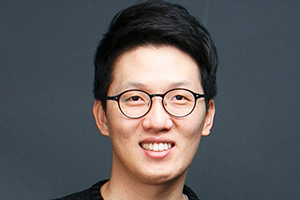
Please describe briefly and in simple terms your research discovery.
The pathogenesis of Parkinson’s disease is due to accumulation and spreading of pathologic a-synuclein. However, what drives the abnormal assembly of pathologic a-synuclein and how dopaminergic neurons are dying by a-synuclein are not known. In our recent two papers, we found both neuronal and non-neuronal mechanism of a-synuclein-mediated neurodegeneration. Pathologic a-synuclein kills neurons via not only PARP-1 activation in neurons, but also releases neurotoxin from activated microglia and astrocyte.
Why did you choose Johns Hopkins for your work?
After getting my Ph.D. with the study of Alzheimer’s disease, my interest was to understand the neuropathology of other neurodegenerative diseases, including Parkinson’s disease. The Johns Hopkins University is a top research institute in the area of medical research since we have a number of excellent scientists and a collaborative environment. All these provide great opportunities for making striking discoveries.
What contributed to your project’s success?
The major contributors to the success of my projects are my mentors, Ted and Valina Dawson, and I really appreciate their support. They always give me opportunities to learn and grow as an independent researcher. I also thank Hyejin Park for being a lovely wife in my life and the best collaborator in work, and many collaborators and colleagues for their great help.
What has been your best/most memorable experience while at Johns Hopkins?
Working in Dawson’s lab itself has been my most memorable experience at Johns Hopkins. Especially, the best moments are when I get recognition and trust from respectable mentors after overcoming many challenges.
What are your plans over the next year or so? Graduating, looking for faculty positions, etc.?
I’m going to finish up other current projects and look for the next destination as a faculty member.
Tell us something interesting about yourself.
I had many hobbies, like music, sports (baseball, basketball and soccer) and traveling. However, now I’m feeling that spending time with my family (wife and two kids) is the most precious and happiest ever. Thank you and I love you.
Priyanka Kothari
David Yue Award
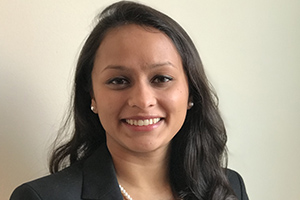
Please describe briefly and in simple terms your research discovery.
As a graduate student in the lab of Dr. Douglas N. Robinson, I have had the opportunity to study protein interactions that endow cells with the ability to sense and respond to the chemical and mechanical signals they experience. Using the model organism Dictyostelium, we discovered that to ensure the cell’s ability to mount a quick, robust response to stimuli, a set of proteins critical for generating contractility form “contractility kits” in the cytoplasm. Non-muscle myosin II, actin crosslinker cortexillin I, and scaffolding protein IQGAP2 build pre-formed units that are primed to respond to stimuli and accumulate to the actin cytoskeletal network, where they can relieve stress on the network and drive shape change. Another concept we are revealing is that feedback exists between seemingly diverse processes in the cell, such as metabolism, transcription and translation, and cell mechanics. By identifying the biochemical interactions that integrate and drive these processes, we are uncovering new biology that will help us further understand how cells sense and respond to their dynamic environment.
What does receiving this award mean to you personally and professionally? Do you have any connection with the particular award you received?
It is truly an honor to be a recipient of a YID Award for our basic cytoskeletal research in the model organism, Dictyostelium. Model organism studies are crucial for uncovering new biology that informs our research in mammalian systems, and it is exciting that the awards committee is supporting this work. Personally, I am humbled and grateful to be recognized alongside fantastic colleagues that are both past and current recipients. I hope to honor Dr. Yue’s life by continuing to pursue important biomedical research.
What contributed to your project's success?
Amazing mentorship from Dr. Douglas Robinson was key to my project’s success. His ability to interpret complex biological systems from a physical perspective and his emphasis on the importance of quantitative data have been critical aspects of my training as a scientist. In addition, the opportunity to collaborate with TJ Ha’s lab here at Hopkins and the support from the Microscope Facility here were both instrumental in providing me access to the expertise and equipment required for the project.
What thoughts do you have about Young Investigators' Day itself, as a celebration of the roles student and fellows play in research at Hopkins?
Basic research is driven by students and fellows at Hopkins and taking the day to recognize these efforts is extremely encouraging and rewarding for trainees. Moreover, medical advances are impossible without years of studying the basic biology that drives disease and celebrating these discoveries is vital for helping the community understand the significance of basic research.
What has been your best/most memorable experience while at Hopkins?
Outside of my research, one of the most memorable experiences for me at Hopkins has been through the SARE (Summer Academic Research Experience) outreach program. Mentoring a high school student in lab and interacting with students in the program through research, lectures, and poster sessions has been a really fulfilling experience. I have learned about the disparities in education and support for historically marginalized individuals, but have also seen how we as scientists can contribute to the community through such outreach initiatives. I hope to continue to be involved in outreach work to encourage young students to pursue their interests.
Tell us something interesting about yourself.
I am trained in Kathak, a classical Indian dance style. I have always found music and dance powerful ways to tell stories and the energy and positivity they bring is inspiring.
Xiaoguang Li
Bae Gyo Jung Award
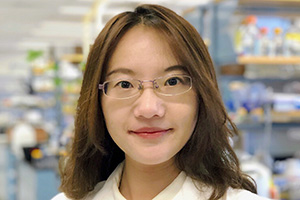
Please describe briefly and in simple terms your research discovery.
I have the great opportunity to work in the laboratory of Peter Devreotes as a graduate student. The long-term goal of our lab is to have a complete description of the network controlling migratory behavior, which will provide new targets for drugs that could be applied for cell migration. Specifically, here we identified that cells maintain complementary spatial and temporal distributions of Ras activity and Phosphatidylinositol-3,4-Bisphosphate (PI(3,4)P2) during random migration and in response to chemoattractants. Whereas Ras is active in the front, PI(3,4)P2 is distributed in a back to front gradient. In addition, depletion of PI(3,4)P2 by disruption of the 5-phosphatase, Dd5P4, or by recruitment of 4-phosphatase INPP4B to the plasma membrane, leads to elevated Ras activity, cell spreading and altered migratory behavior. Taken together, my work investigated the molecular mechanisms that bring about the mutual inhibitory interaction between Ras activation and PI(3,4)P2. These exciting findings uncover an important role of PI(3,4)P2 in the regulation of Ras activity, which may extend well beyond cell migration.
Why did you choose Johns Hopkins for your work?
Johns Hopkins is everyone’s dream school to us medical students in China. It’s a long but great academic journey to pursue graduate study overseas, and there is a strong willingness to study at Johns Hopkins. I am deeply impressed by the excellent learning resources, graduate student-friendly lab atmosphere, and supportive and enduring network of colleagues and collaborators.
What contributed to your project’s success?
First of all, comprehensive training and insightful and patient guidance from my mentor, Peter Devreotes, guided me through this academic success. Second, collaboration with some of the experts in different fields accomplished the project efficiently. For example, we collaborated with experts on the single-molecule pull-down (SiMPull) assay, the simulation using computational model, and the molecular mechanisms of my findings. The third contributions are the excellent equipment, graduate student-friendly lab atmosphere, supportive peers and enduring network of colleagues. From my side, my experimental skills, imagination, creative thinking and research experience on cell biology probably helped me a lot.
What thoughts do you have about Young Investigators’ Day itself, as a celebration of the roles students and fellows play in research at Johns Hopkins?
Recognition for the contributions of early-career scientists across disciplines is very important. Young Investigators’ Day provides students and fellows with a great opportunity to honor their work, and motivates them to pursue even higher.
What has been your best/most memorable experience while at Johns Hopkins?
I will never forget when one of the most difficult experiments finally worked out after a one-year effort on it. We were trying to design an enzyme fragment that would destroy PI(3,4)P2 in living cells. After four different constructs failed, we essentially gave up on the idea. A few months later, I decided to try some more fragments, and one of them worked out when I was making movies of the beautiful migrating cells downstairs at the microscope facility. After I changed the PI(3,4)P2 levels acutely in live cells, the cells went even crazier than I would have ever thought. I became the first person in this field who could make this enzyme fragment work in Dictyostelium cells.
Tell us something interesting about yourself.
I always make jokes to my friends that if I were not a young investigator, I would have been an artist. I enjoy painting, singing, listening to music and watching movies. I also love outdoor sports, exploring, hiking and traveling through the world.
Haiquan Lu
Paul Ehrlich Award
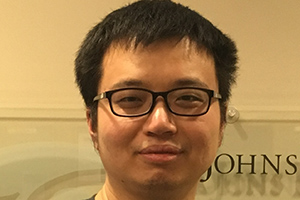
Please describe briefly and in simple terms your research discovery.
In the lab of Gregg Semenza, my research interest is to investigate the role of hypoxia-inducible factors (HIFs) in the control of breast cancer stem cells (BCSCs) and to develop novel therapeutic strategies that will improve the response to chemotherapy by targeting BCSCs. We have shown that treatment with chemotherapy increases the BCSC population, which leads to drug resistance, tumor recurrence and metastasis. My studies have delineated HIF-regulated pathways that play important roles in the breast cancer cell response to chemotherapy. Targeting HIFs or downstream pathways will block induction of the BCSC phenotype and may improve clinical outcomes in breast cancer.
Why did you choose Johns Hopkins for your work?
I was first attracted by the outstanding work from the Semenza lab when I started to touch some research on HIFs at the end of my Ph.D. period. After a visit for my interview, the cutting-edge research facilities, the nurturing environment for trainees, as well as the history of Johns Hopkins let me make the final decision to join Hopkins for postdoc training.
What contributed to your project’s success?
The most important factor that contributes to the success of my project is the guidance from my talented and devoted mentor, Dr. Semenza. He has given me the freedom to discover the field I am interested in, and has given me invaluable instructions and suggestions when I met problems. My curiosity, persistence and resilience are also important for the success of my project. In addition, I am very fortunate to have nice and smart colleagues and students in our lab. The creative and collaborative working environment contributes a lot to the success of my daily work.
What are your plans over the next year or so? Graduating, looking for faculty positions, etc.?
I am planning to start my own lab and am looking for a faculty position now.
Tell us something interesting about yourself.
I am a fan of sports and food. I spend a lot of my free time watching soccer games and looking for delicious food in different places, together with my 3-year-old son.
Georgios Antonios Margonis
Paul Ehrlich Award
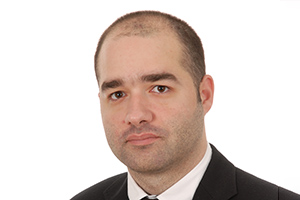
Please describe briefly and in simple terms your research discovery.
This study is important because it brings to the forefront surgery and tumor biology in patients with colorectal cancer liver metastases. Specifically, it is the first study to tailor surgical technique (anatomical versus non-anatomical hepatectomies) according to the presence or absence of a biomarker (wild-type versus KRAS mutated tumors). Of note, to date, the use of biomarkers was limited to only informing prognosis. The broader clinical message of the study is that because tumor biology may differ between patients with the same malignancy, surgical treatment should be individualized.
Why did you choose Johns Hopkins for your work?
The Department of Surgery at Johns Hopkins combines the clinical expertise in surgical oncology with “top-notch” facilities and the necessary infrastructure to carry out novel research projects.
What does receiving this award mean to you personally and professionally? Do you have any connection with the particular award you received?
The Paul Ehrlich Award is the greatest honor I have received from The Johns Hopkins University during the four years I have been here. It is very fulfilling when your work is recognized by your institution.
What contributed to your project’s success?
There were three major factors that contributed to the project’s success. Two great mentors, Drs. Weiss and Wolfgang, an idea with major clinical implications and the resources that Johns Hopkins offered us.
What are your plans over the next year or so? Graduating, looking for faculty positions, etc.?
Next year I will focus more on my clinical duties at the Johns Hopkins Hospital Department of Surgery.
Tell us something interesting about yourself.
If I could say one thing about myself, it is that so far, I have led my life with dignity and respect, treating everyone the way I want to be treated.
Veena Padmanaban
Nupur Dinesh Thekdi Award
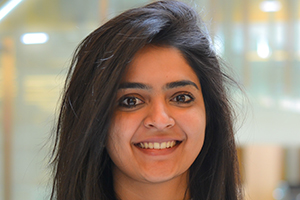
Please describe briefly and in simple terms your research discovery.
Metastasis is the primary driver of cancer-related deaths. Yet, its mechanisms remain poorly characterized. The current model of metastasis is based on loss of the cell-cell adhesion protein (E-cadherin) as a driver of cancer cell invasion and distant colonization; it is therefore classified as a tumor/ metastasis suppressor. My work directly demonstrates that, although E-cadherin suppresses invasion, its expression is required for successful metastasis in most breast cancers. I show that E-cadherin is a survival factor whose expression is essential for limiting oxidative-stress mediated cell death in cancer cells during metastasis.
Why did you choose Johns Hopkins for your work?
Johns Hopkins is at the frontier of biomedical research and fosters an environment of collaboration and sustained encouragement of its trainees. It is also an institute with a rich history and a pedigree of great scientists. We have a great community of mentors who are genuinely invested in their students’ success. The supportive and close-knit network of graduate students further strengthened my decision to complete my graduate training at Hopkins.
What contributed to your project’s success?
The continued support, encouragement and guidance provided by my Ph.D. adviser, Andrew Ewald, is key to my project’s success. Together, we worked toward identifying an important question, developing experimental strategies to effectively test our hypotheses and executing these ideas. I am also thankful for the countless discussions with others in the lab and collaborations that were critical in drawing some key conclusions. I am proud of what we were together able to achieve.
What thoughts do you have about Young Investigators’ Day itself, as a celebration of the roles students and fellows play in research at Johns Hopkins?
Young Investigators’ Day is a celebration of exceptional trainees at Johns Hopkins. I remember attending the ceremony in 2015 and being inspired to be on the stage one day. During the course of their research, most students/ postdocs persevere through failed experiments and long hours, and the excitement of science may be forgotten. The Young Investigators’ Awards provide a tangible measure of success that students aspire toward.
What are your plans over the next year or so? Graduating, looking for faculty positions, etc.?
I will be receiving my Ph.D. in cell biology in April 2019. I am planning to transition to an academic postdoctoral fellowship in July.
Tell us something interesting about yourself.
I enjoy taking road trips (sometimes extremely long ones), hiking and exploring new towns/cities with family and friends.
Shiva Razavi
Michael A. Shanoff Award
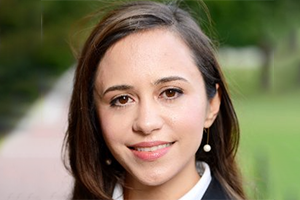
Please describe briefly and in simple terms your research discovery.
In Takanari Inoue’s lab, we use cell biology techniques to parse the signals that regulate physiological processes such as cell division, movement and fusion. All these events are triggered by mechanical forces that arise from actin protein polymerization on the cell membrane. To understand the signaling circuit that regulates this force, for the first time in our lab we set out to probe the signaling molecules outside a living cell, where we had more experimental control. We embarked on bottom-up engineering of an artificial cell-like system that could mimic actin-induced force generation on its membrane in response to a chemical input. We fabricated cell-sized vesicles and in them we reconstituted the chemical sensing modules, and actin polymerization regulators. By fine-tuning the concentrations of the proteins and lipids, we achieved actin-induced forces that broke symmetry in response to the placement of artificial cells in a chemical gradient. We then tracked the protein modules in time and space, and realized a bistable, feedback behavior. Our platform bridged the gap between cell studies and the in vitro ones that lack the cells’ dimensionality and membrane considerations. This protocell could serve as a biomimetic device that is deployable in a cellular milieu for drug or gene delivery.
What does receiving this award mean to you personally and professionally? Do you have any connection with the particular award you received?
I am humbled that my Ph.D. efforts have been recognized, especially given that throughout my Ph.D. journey on occasion I was dissuaded by both scientific experts and friends from continuing on a project that was too ambitious and at risk of producing no positive data. This milestone has induced further excitement for me to take bold projects as a postdoctoral researcher and, hopefully, as an independent academic researcher.
What contributed to your project’s success?
The culmination of my research extends beyond myself. My adviser, Takanari Inoue, was the backbone of this project. He was patient during the initial years that I spent understanding and optimizing a platform that became the chassis for the proteins I assembled during the later years. He also connected me to scientific experts in Japan, France, Iowa and Johns Hopkins who all elevated the work with their comments or scientific contributions. I am also profoundly appreciative of my colleague, Hideaki Matsubayashi, who was a source of inspiration and injected excitement in the project. He deeply understood the intricacies of the experiments. We joined efforts in chasing a scientific dream and building a unique biomimetic system that was greater than the sum of what we could have achieved individually.
What thoughts do you have about Young Investigators’ Day itself, as a celebration of the roles students and fellows play in research at Johns Hopkins?
It is a befitting occasion to honor the legacy of Paul Talalay, world-renowned pharmacologist and founder of the Young Investigators’ Day program, who recently passed away. In the solitary state that we perform experiments as trainees, we doubt the impact of our endeavors from time to time. It is refreshing to see how one’s work fits within the grander mission of an institution that strives to improve human lives.
What has been your best/most memorable experience while at Johns Hopkins?
My brightest memories of Hopkins happened in dark rooms. A few months before leaving Hopkins, a fellow graduate student, Bedri Abubaker-Sharif, and I joined efforts and, through a series of synchronized setup manipulation trials, for the first time we accomplished administrating a rapamycin gradient with a needle microinjecter. Asymmetric actin polymers started emerging under the confocal microscope well into the early morning hours. The room was imbued with exclamations of awe and happiness!
Tell us something interesting about yourself.
What might be unique is my career transition from fidgeting with car parts to cellular parts, and also being raised with three brothers who made me feel “I belong” in the fields that were traditionally dominated by men. For leisure, I like reading and enjoy channeling my creativity through writing, graphics illustration and interior design.
Hiroshi Senoo
Albert Lehninger Award
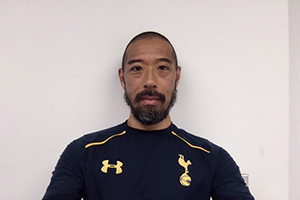
Please describe briefly and in simple terms your research discovery.
G-protein-coupled receptors (GPCRs) activate mTORC2-AKT signaling in metabolism, cell survival and cytoskeleton dynamics. Altered mTORC2-AKT signaling leads to many human diseases, including cancer, metastasis and metabolic syndromes; however, it is unknown how mTORC2 is activated downstream of GPCRs. Using proteomic approaches, I identified a GDP-bound RhoGTPase as an mTORC2-binding protein and identified its function in mTORC2-AKT signaling by reconstituting GPCR-mediated mTORC2-AKT activation with purified mTORC2, Rho and Ras.
My discoveries rewrite the central dogma that G proteins are only active in a GTP-bound state and further our understanding of mTORC2-AKT-related human diseases.
Why did you choose Johns Hopkins for your work?
Because Miho Iijima, who is my mentor, is one of the fabulous scientist in the cell migration field.
What does receiving this award mean to you personally and professionally? Do you have any connection with the particular award you received?
I’m delighted to announce this award to the Japanese government because they gave me a chance and fellowship.
What contributed to your project’s success? (Special skills, interests, opportunities, guidance, etc.)
Discussion with my mentors, Miho Iijima and Hiromi Sesaki as well as fellowship from the Japanese government.
What has been your best/most memorable experience while at Johns Hopkins?
When I found a novel mechanism by which mTORC2-AKT signaling is activated by Rho-GDP, it was the most memorable result for me.
Tell us something interesting about yourself.
My unique set of expertise in cell biology, molecular biology and biochemistry allows me to conduct unparalleled research in the field of biomedical life science.
Masashi Tabuchi
Daniel Nathans Award
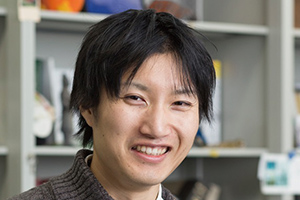
Please describe briefly and in simple terms your research discovery. Why is it important in the context of your field? In what lab did you do the research?
Our brains encode information by using electrical signals (action potentials or spikes) within neurons, which then act at a circuit level to generate behavior. Neural coding is the study of how these spikes encode information, and can be broadly classified into “rate” and “temporal” coding. Rate coding refers to the simple idea that changes in the frequency of spiking carry information. In contrast, temporal coding is a concept that argues the temporal structure of spike sequence represents information. While temporal codes have been observed in a variety of systems, whether temporal codes alone are sufficient to drive behavior is controversial, and the molecular mechanisms underlying temporal codes are poorly defined. In Mark Wu’s lab at Johns Hopkins, I studied Drosophila circadian clock neurons and showed that their temporal pattern of firing directly controls sleep quality. Using genetic approaches, I also delineated the molecular mechanisms underlying these clock-driven spiking patterns. Surprisingly, my work also revealed that these temporal pattern codes can themselves trigger synaptic plasticity, the first time this has ever been shown.
What does receiving this award mean to you personally and professionally? Do you have any connection with the particular award you received?
I am truly honored to receive the Daniel Nathans Young Investigator Award, and have always deeply respected Dr. Nathans for his fundamental contributions to molecular biology. In fact, as you may know, each floor of the Ashland parking garage is named after a famous Hopkins researcher or clinician, and I have always parked my car on the seventh floor of the Ashland parking garage — the “Daniel Nathans” level — because of my admiration for him! On a professional level, receiving this award gives me the confidence to continue tackling the challenging scientific problems that interest me.
What contributed to your project’s success? (Special skills, interests, opportunities, guidance, etc.)
First, science is a team effort, and I truly believe that my amazing collaborators were a major reason for my project’s success. I particularly want to thank Mark Wu for his outstanding mentorship. I also thank Kechen Zhang and Joe Monaco (in the Department of Biomedical Engineering) for their beautiful neurocomputational modeling, Sha Liu and Qili Liu (who were in the Wu lab and now have their own labs at the VIB and the University of California, San Francisco), and Grace Duan and Ben Bell, who also contributed significantly to the project. Second, these temporal codes are quite challenging to study, and so I believe that my focus on using the most rigorous experimental methods, combined with careful and patient observation, helped as well.
What has been your best/most memorable experience while at Johns Hopkins?
I have had an amazing time in the Wu Lab and at Johns Hopkins — it’s hard to pick just one moment. But collectively, I think it’s been the fantastic scientific discussions that I’ve had with my labmates and my mentor Mark that have inspired me and fueled my passion for doing exciting (and sometimes crazy) experiments.
Tell us something interesting about yourself.
In my free time, I really love fishing (mainly freshwater trout, bass and pickerel). I have more than 30 fishing rods (each rod has its own special purpose). I think that my experiences in fishing are in some ways similar to and beneficial for my science. Both require long-lasting persistence in the face of nothing happening, and both significantly benefit from great technical skill. Surprisingly, despite its reputation for being a relaxing activity where you can turn off your mind, I find fishing to be a very cognitively intense process (although still very relaxing).
Selam Abi Woldemeskel
Michael A. Shanoff Award
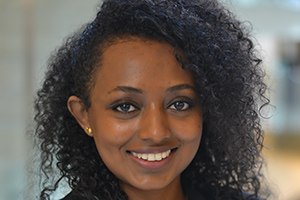
Please describe briefly and in simple terms your research discovery. Why is it important in the context of your field? In what lab did you do the research?
In the Goley lab, we study bacterial growth, development and division using Caulobacter crescentus as a model organism. During my thesis work, I discovered that the conserved transcriptional regulator CdnL regulates transcription of biosynthetic genes required for proliferation. Loss of CdnL alters the transcriptome in a manner that impacts metabolic homeostasis required for growth, morphogenesis and development. Consistent with CdnL’s role in proliferation, nutrient limitation leads to clearance of CdnL, indicating an undiscovered layer of control by which bacteria adapt to stress. These findings shed light on the intricate mechanisms bacteria use to regulate their growth and could inform medically relevant research aimed at developing tools to inhibit bacterial proliferation.
Why did you choose Johns Hopkins for your work?
I chose to attend Johns Hopkins because of the unparalleled training in the biomedical sciences and its highly collaborative and supportive environment. When I was deciding where to go for my graduate education, it was important for me to be in a challenging, impactful and stimulating environment, and my training at Johns Hopkins has provided me with all of that. Lastly, Baltimore’s proximity to D.C., which has the largest Ethiopian population in the country and the best Ethiopian food outside of Ethiopia, was the cherry on top.
What does receiving this award mean to you personally and professionally? Do you have any connection with the particular award you received?
When I attended the Young Investigators’ Day events as a second-year student, I was hopeful that I could someday join the ranks of students recognized for their exceptional science. It is a full circle moment for me to receive an award that recognizes my hard work over the past five years, and I am truly honored. This award has motivated me to continue to work hard so that I could someday have my own independent research group at an institution like Johns Hopkins.
What contributed to your project’s success? (Special skills, interests, opportunities, guidance, etc.)
My project’s success and my growth as a scientist primarily stems from the wonderful mentorship and encouragement I received from my Ph.D. adviser, Erin Goley. Erin has challenged me to rigorously test hypotheses, effectively communicate and think deeply about scientific problems.
Her scientific rigor and patience as a mentor has set an example of how to treat people inside and outside the lab. Our mutual trust and respect has given me the freedom to grow (with) my project in unexpected ways as well as the opportunity to establish collaborations with leading experts.
In addition to Erin’s guidance, constructive discussions I have had with my labmates and collaborators have also significantly and positively impacted my project. Lastly, my parents’ support and encouragement during rough patches of graduate school have also played an important role in my success.
What has been your best/most memorable experience while at Johns Hopkins?
My most memorable experience at Hopkins was in the fall of 2017. I was walking from Upper Fells Point to lab, and instead of my usual Spotify playlist I was listening to my younger sister, who had just enrolled in the cellular and molecular medicine program at the Johns Hopkins University School of Medicine, tell me about her rotation project. It was a very nostalgic moment that took me back to my childhood when we used to walk to school together in Addis Ababa, Ethiopia, and it made me appreciate how far we have both come. Growing up, I had never imagined that we would one day pursue our education in the U.S. and earn our Ph.D.s at one of the most renowned institutions in the world. I am truly grateful for my sister’s friendship and support these past two years, as I realize that not all international students have the privilege of being close to their family during their educational pursuits.
Tell us something interesting about yourself.
I am interested in photography and enjoy taking pictures of cities and landscapes, editing and sharing them with friends on Instagram. It also complements my love of traveling and exploring different cities. Besides that, I also enjoy a range of music genres and regularly attend concerts at the Baltimore Symphony Orchestra and in the area.
Colin Chih-Chien Wu
Paul Ehrlich Award
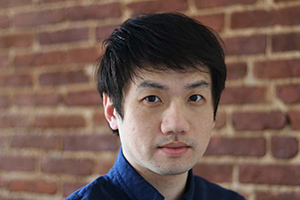
Please describe briefly and in simple terms your research discovery. Why is it important in the context of your field? In what lab did you do the research?
In the Green lab, I developed a methodology to improve the current resolution of ribosome profiling technique, allowing us to systematically define the in vivo ribosome conformational states genome-wide. With this high-resolution ribosome profiling approach, we are able to decipher how cellular stresses regulate translation elongation.
What does receiving this award mean to you personally and professionally? Do you have any connection with the particular award you received?
I feel honored to receive this award. I believe that the Paul Ehrlich award will continue to motivate its awardees to pursue a career in science.
What contributed to your project’s success? (Special skills, interests, opportunities, guidance, etc.)
I have been fortunate to have guidance from my mentor, Rachel Green. Her passion for science is contagious! In addition, my colleagues in the Green lab are second to none. I couldn’t have done this without them.
What thoughts do you have about Young Investigators’ Day itself, as a celebration of the roles students and fellows play in research at Johns Hopkins?
I think Young Investigators’ Day embodies the idea that Hopkins recognizes its trainees’ hard work as cornerstones of scientific advances.
What has been your best/most memorable experience while at Johns Hopkins?
I have really enjoyed our departmental colloquiums. The Department of Molecular Biology and Genetics is a very friendly and collaborative environment.
Tell us something interesting about yourself.
I enjoy photography and astrophotography in my free time.
Wu Yuan
Alfred Blalock Award
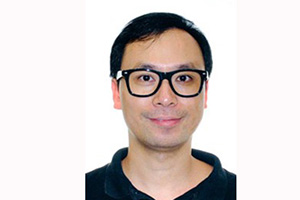
Please describe briefly and in simple terms your research discovery. Why is it important in the context of your field? In what lab did you do the research?
We developed a super-achromatic flexible probe with an ultracompact form factor (approximately 520 micrometers in outer diameter), enabling ultrahigh-resolution (approximately 1.7 micrometers axial resolution (in tissue)) endoscopic optical coherence tomography imaging at 800 nanometers.
This technology affords a great potential to perform “optical biopsies” without the need for tissue removal or processing. It has significant translational potential for in vivo clinical applications in assessing tissue pathological changes in internal luminal organs, particularly those of small and/or young subjects and complex internal organs (such as small airways). I am doing my research in the Biophotonics Imaging Technology Lab directed by Xingde Li at the Department of Biomedical Engineering.
Why did you choose Johns Hopkins for your work?
With its world-class clinical practice and biomedical research, Johns Hopkins is an ideal place to tackle real-world clinical challenges with innovative technologies.
What contributed to your project’s success? (Special skills, interests, opportunities, guidance, etc.)
Guidance and encouragement from my mentor and help from my talented colleagues all contributed to the success of this work.
What thoughts do you have about Young Investigators’ Day itself, as a celebration of the roles students and fellows play in research at Johns Hopkins?
Young Investigators’ Day provides a very important stage for recognizing and encouraging students and fellows for their great contributions to research excellence at Johns Hopkins.
What has been your best/most memorable experience while at Johns Hopkins?
Working and collaborating with medical doctors and technical experts at Johns Hopkins has been immensely rewarding.
Tell us something interesting about yourself.
I enjoy playing soccer, running and swimming. And I enjoy my time with my kids.
